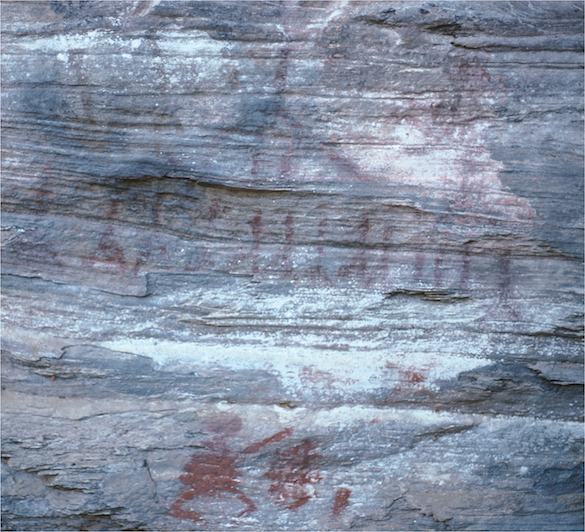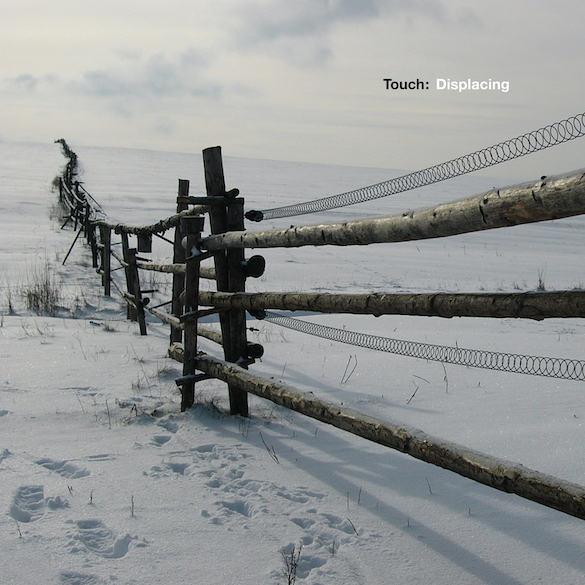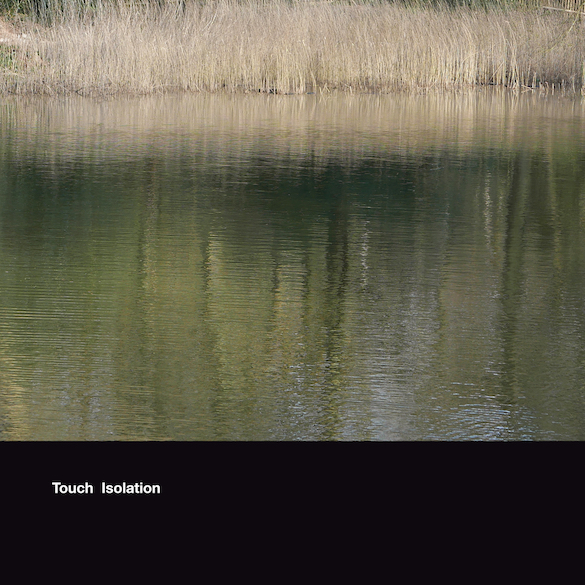CD – 4 tracks – 78:40
Limited edition of 500

Track listing:
1. Aeternus
2. Perpetuum
3. Immortalis
4. Semper Liber
Semper Liber consists of a series of duets featuring Marcus Davidson, Hildur Gudnadottir, Mike Harding, Charles Matthews, Clare M Singer, Maia Urstad and Anna von Hausswolff and are drawn from recordings made at Spire events since 2009. Mixed by its curator, Mike Harding, at the Völlhaus, and mastered by Mark Van Hoen, this powerful 4 track collection – to be played as one piece – explores the sonics of the mighty organ in all its thundering glory.
***WARNING! EXTREMELY LOW FREQUENCIES (BASS) MAY CAUSE DISTORTION ON HEADPHONES/COMPUTER SPEAKERS!***
Performed on the 1893 Schlag & Söhne organ at Johanneskirken, Bergen; the 1967 Karl Ludwig Schuke organ at Passionskirche, Berlin; the Peter Bares organ, inaugurated in 2004, at Kunststation St Peter, Cologne; the 1885 ‘Father’ Henry Willis organ at Lincoln Cathedral; the 1877 ‘Father’ Henry Willis organ at Union Chapel, London; the Rieger organ at St. Stephan’s Church, Mautern & the 1897 Johnson & Son organ at St. Saviour’s Anglican Church, Riga between 2009 and 2016.
The 4 colour plates by the art historian and author Sydney Russell show cave art from 4 to 6 thousand years ago. Taken in Brazil on one of several expeditions she made around the world, these highly emotional works reveal the sophistication and ageless quality of the imagination of the peoples who were expressing themselves at this time; they have been slow to reveal their beauty to us, having survived all weathers; their acoustic soundtrack unfolds slowly, submersive and involving.
Sydney Russell writes: ‘These photographs were taken in 1976 in Brazil. We eventually obtained minimum radio carbon datings for levels covering the paintings from approximately 3750-2500 BCE. They originate from the rock shelter sites of Sucupira, (Lagoa Santa) and Lapa do Cipo (Santana do Riacho), near Minas Gerais and Quadrillas (Montalvania), Bahia. Please refer to the website for more information.’
Mixed at the Völlhaus
Mastered by Mark Van Hoen
Photography by Sydney Russell
Artwork by Philip Marshall
Reviews:
weblog (UK):
Spire is a long-running flexible pool of musicians and sound artists who explore the capabilities of church organs in a non-traditional way. This 79-minute CD comprises four long pieces where different sustained notes, chords or note clusters are sounded simultaneously and gather momentum as drifting strata. Novel secondary patterns emerge and sparkly, shimmery, whining tones weave threads of fabric in and around sheets of deep pitched drones. It’s weighty though not asphyxiating.
Back in 1998 the cult electronic trio Coil achieved similar results on their 73-minute four part ‘Time Machines’ using analogue synthesisers. Whereas Coil attempted to suspend listeners’ sensation of time, Semper liber with its cover image of 5,000 year-old cave art, marvels at the immensity of historical time and the mystery of time itself.
Coincidently, US philosopher Robert Crease writes bravely on page 18 in this month’s Physics World, (a UK Institute of Physics publication) that:–
‘you can’t explain time by putting physicists in charge of what time really is’. Here, he is calling for scholars of humanities to ramp up their voices on matters where scientists appear to have the upper hand. Perhaps sound artists should ramp up their voices too? [AH]
Ambientblog (Belgium):
The church organ, the most majestic of keyboard instruments and the instrument with ‘the greatest frequency range of any acoustic instrument’ has recently gained some extra (and deserved) attention in experimental and drone music. Detached from its usual association with classical and/or devotional music the instrument opens up a completely new sonic world.
‘There is no ‘correct’ way to play the organ. Of course, there are strong and long traditions of how it should be played and by whom, but in the realm of time these strictures count for nothing.’ Unlike many other instruments/performances, the sound of a church organ opens up a unique world, too: the characteristics of the organ strongly depend on the skill of its builders ánd on the acoustic properties of its location.
Semper Liber, (‘always free’) is a very special project dedicated to the sound of the church organ – ‘the Emperor of Instruments’.
‘The Eternal Chord’ is a series of live concerts that grew out of the Spire Project, based on an idea by Mike Harding who was fascinated by this instrument but also was frustrated that during church services the ‘the organ players clearly never pushed the instrument to its limits.’
Ever since 2009, various duo’s have performed on different locations: Hildur Gudnadottir, Claire M. Singer, Anna Von Hausswolff, Marcus Davidson, Mike Harding, Charles Matthews and Maia Ustad. Some of the recordings of their explorations / performances can be found on the Eternal Chord Live page, or on this Bandcamp page.
Semper Liber, however, is not simply a performance recording. Mike Harding has drawn material from the different recordings and mixed them into four long tracks that are meant to be played as one continuing piece. It’s impossible to distinguish who is exactly playing when. But all performers definitely share a single goal:– ‘to explore the sonics of the mighty organ in all its thundering glory.’
You may have to set aside some of your preconceptions of ‘church organ music’ if your first association with the instrument is a church service or Bach, but I know you can, otherwise you probably wouldn’t be here and be reading this.
The reward:– an incredible journey into an almost otherworldly sonic space… provided of course you can play this on a decent sound system and on an appropriate volume (there’s a warning in the liner notes about the extremely low bass frequencies that may cause distortion, especially in the last track), and even then, I guess that even the best sound system cannot live up to the real ‘live’ sound of a church organ in its own reverberating environment. After listening to Semper Liber, I really hope that this series of live performances will be continued in the future. [Matthias Urban]
Wreck This Mess (France):
Le système son de notre vénérable tour a survécu… Il faut dire que ce vieux Mac Pro en a vu d’autres. Malgré la mise en garde – ‘warning! extremely low frequencies (bass) may cause distortion on headphones/computer speakers!’ – aucun dégât constaté. Ni pour nos enceintes, ni pour nos tympans…! En fait, seule la quatrième et dernière piste, qui donne son titre à cet album au tirage limité, accuse vraiment des fréquences très très basses.
Un lent bourdonnement que l’on ressent presque de manière physique et mentale. En parallèle, une longue plainte monocorde s’élève puis meurt tranquillement, dessinant une hyperbole sonore. Une note prolongée qui se déploie progressivement, sans variation de style, mais qui gagne en intensité avant de refluer (‘Aeternus’). Un drone acoustique qui sort des entrailles d’un orgue ‘martyrisé’ notamment par Marcus Davidson, Hildur Guðnadóttir et Mike Harding qui forment The Eternal Chord (et Mark Van Hoen pour le mastering).
Les morceaux intermédiaires (‘Perpetuum’, ‘Immortalis’) sont basés sur ce même schéma, mais ils offrent un aspect plus soft, moins intense. Nous sommes là sur un registre plus ambient, plus subtil aussi, avec un habillage un peu plus sophistiqué. Cette réalisation s’inscrit à la suite d’une série de performances live du même ordre où des artistes du label Touch sont invités à se produire dans différentes églises et à jouer de l’orgue de manière minimaliste et expérimentale. [Laurent Diouf]












